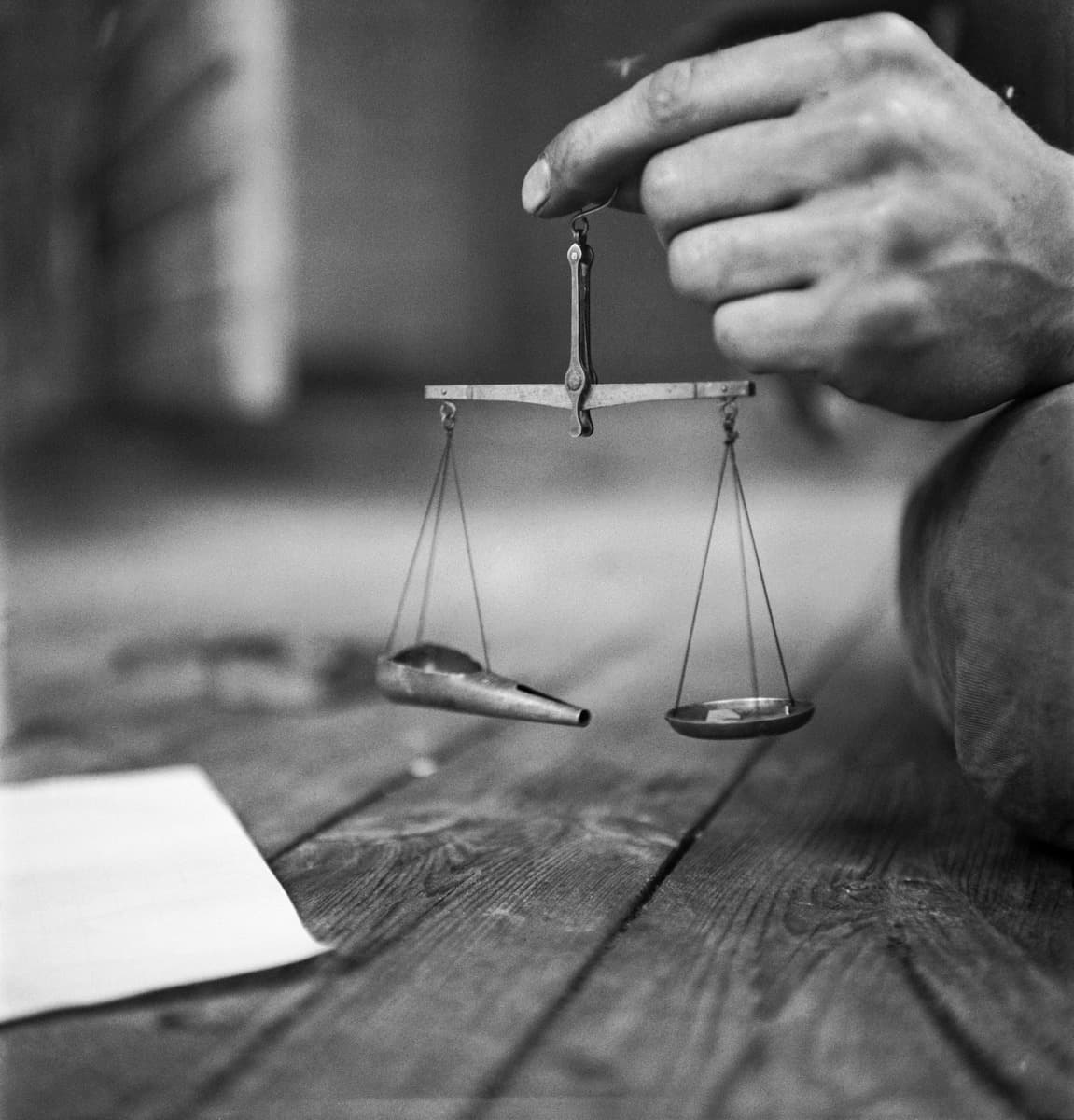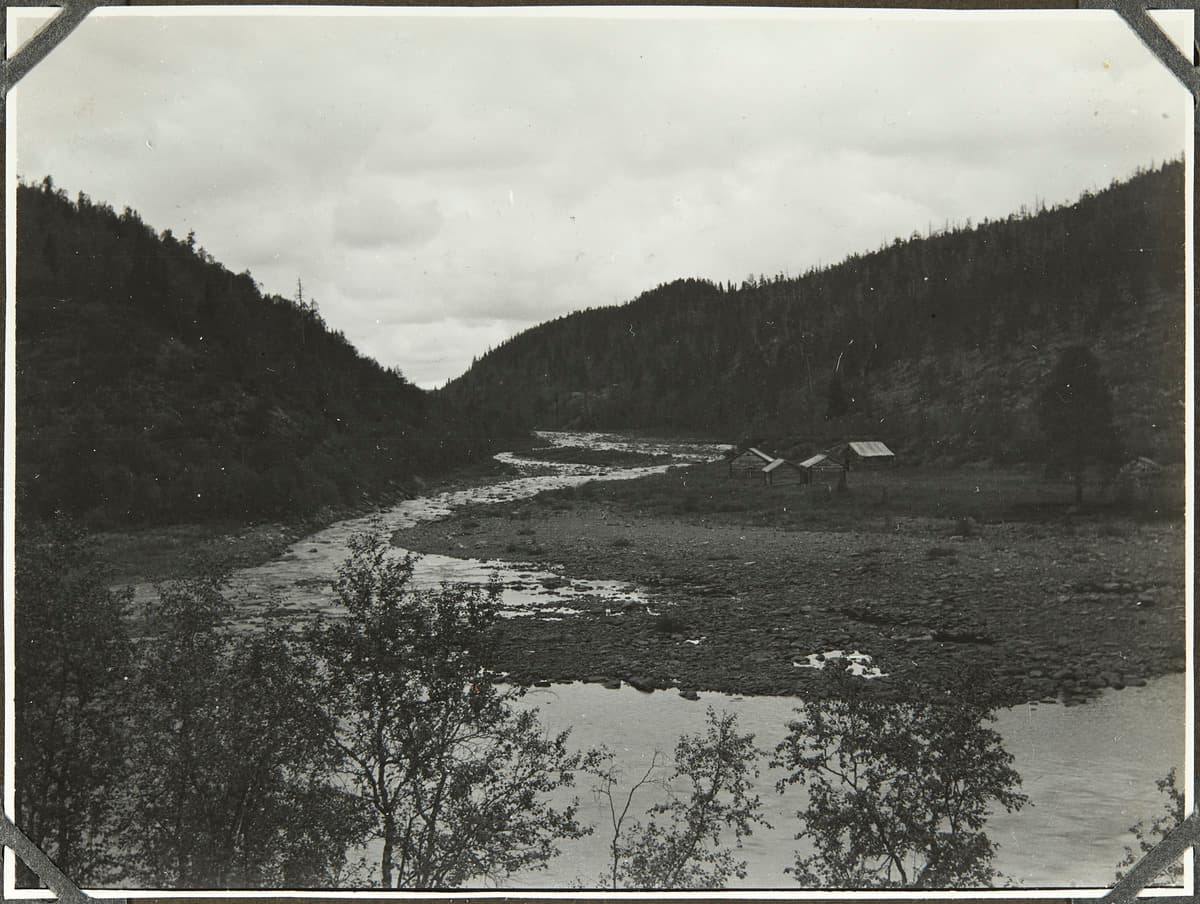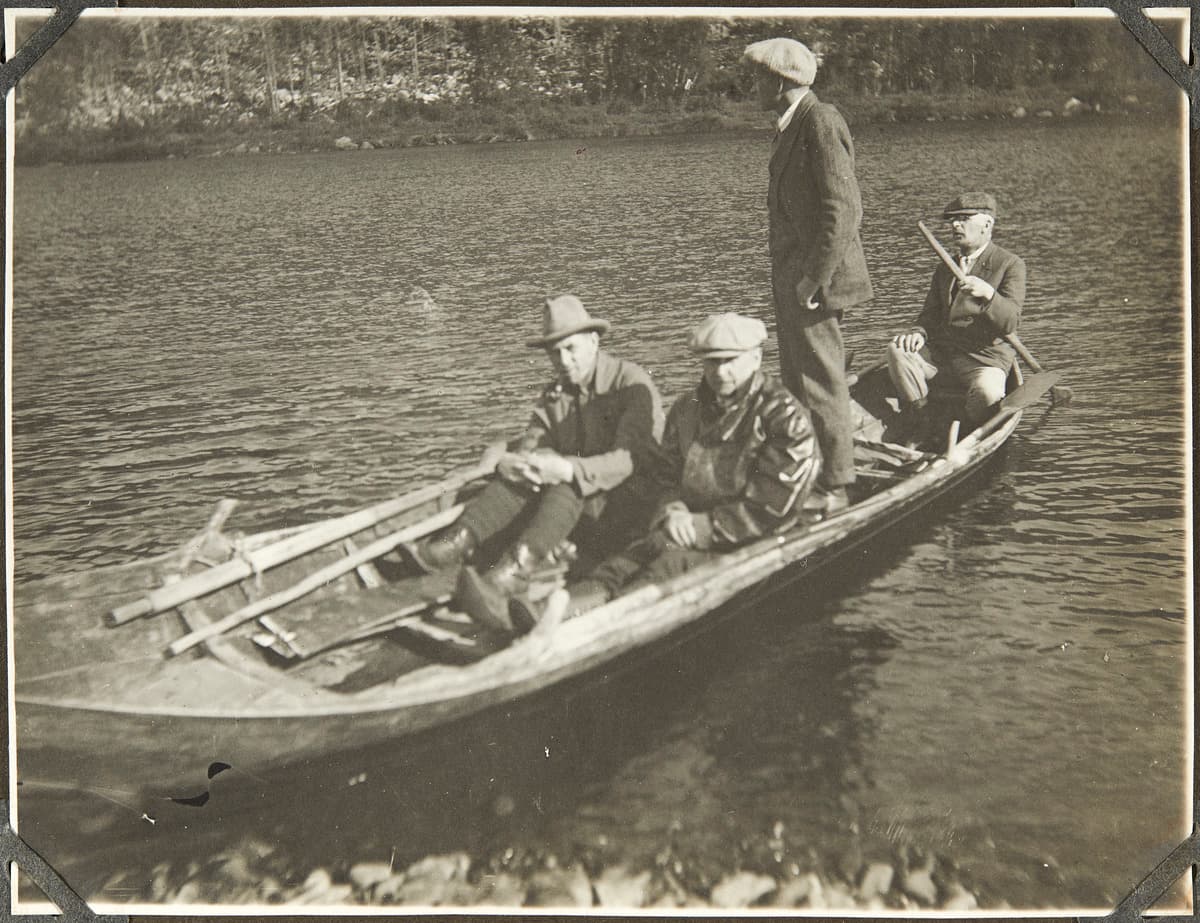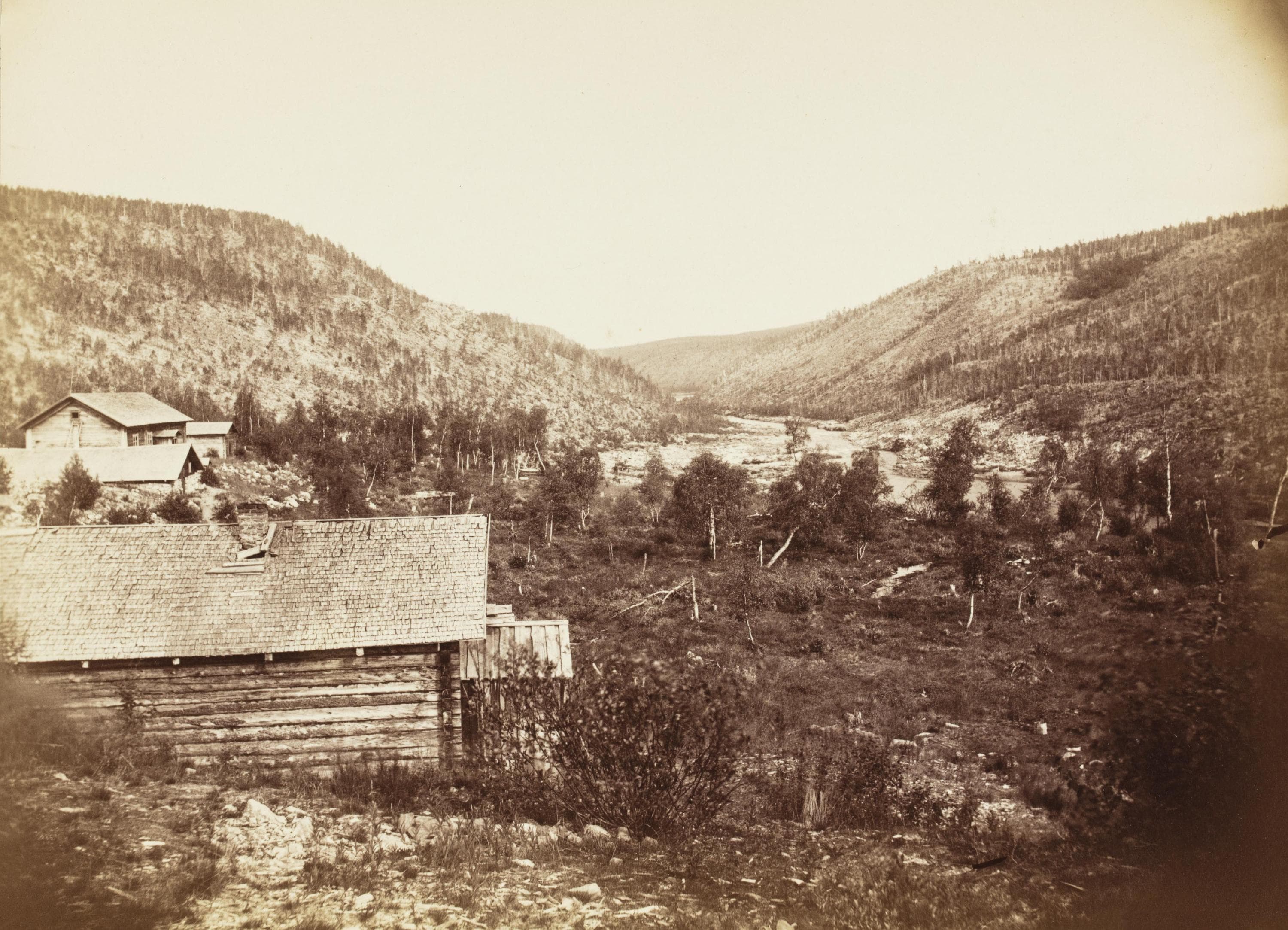Via Kittilä to the Gold Land of the North
At the end of the 1800s, Kittilä was the centre of northernmost Lapland. In addition to Enontekiö, Muonio, Kittilä and Sodankylä, the municipality of Inari belonged to the district of Lapland. In Kittilä, there was a bailiff, a rural police chief, a judge, a courthouse, a tavern and a shop. At the beginning of the gold rush, Konrad Wilhelm Planting was the bailiff and August Edard Bucht was the police chief.
The gold land of the Ivalojoki river were accessed via Kittilä. The old road and trail route led from Kittilä to Inari via Lake Jeesiöjärvi and Pokka in the northeast. The winter road to Sodankylä went through Kelontekemä. In the summer, a boat was taken through the Ounasjoki tributaries to the ridgeline. At times, the boat had to be towed for kilometres on dry land to Korsalompolo and Korsajärvi. Korsaoja was then followed to Ivalojoki river. The distance from Rovaniemi to Ivalojoki was close to 400km.
The gold land of Ivalojoki river was officially found by an expedition sent by the Senate, in September 1868. The gold history of Ivalojoki originates a few hundred metres upstream from the bend of Louhioja and Ivalojoki, where the expedition led by Johan Konrad Lihr found 0.2g of gold in the holes of the bedrock in Nulkkamukka. In 1987, a monument was erected for Lihr in Nulkkamukka.
The actual gold rush to Ivalojoki river started when 2kg of gold had been panned in a few weeks, in the autumn of 1869. The gold miners were Jakob Ervast from Oulu and Nils Lepistö from Raahe, who had studied gold mining in California. The discovery was made at the Kallioporttikoski rapid in the middle of the Porttikoski rapids. After a report by Lihr, a public debate between him and Ervast began, on the true finder of Ivalojoki gold.
Kultala Crown Station
In March 1870, after the gold discovery by Ervast and Lepistö, an Oulu-based contractor and his team relocated to the Ivalojoki river and started felling pine trees and hewing logs from them. By the beginning of June, they had built the main building at Kultala, which resembles an Ostrobothnian farmhouse. A separate house was built for the workers who were hired by the state, as well as a bakery, basement and storage facilities. A smoke sauna was built on the shore a year later. Soon, Ivalojoki saw a group of 100 men trying their luck, and in five years, some forty log and peat cabins were built along the river.
A total of 335 people worked in the Ivalojoki gold washplant, in summer 1870. When including public officials, owners of the claims, gold miners and vagrants, some 500 to 600 people lived in the gold land of Ivalojoki river at the time. There were 659 residents in Inari at the time, so Kultala may have been the largest urban area in Northern Finland after the cities.
At the Crown's base in Kultala, Ivalojoki, the permits of gold prospectors were inspected, the gold was weighed and taxed to the state. The station’s most active years were between 1870 and 1900, when 38 men lived there, at best.
A modest two-room tavern was located approximately 100 metres from the main building. It was also called an inn, saloon or canteen. A drink cost 30 pennies, meals 1-1.5 Finnish marks, a cup of coffee or tea 30 pennies. After the gold rush was over, the tavern was left empty and ruined. The very last logs went up in smoke in the campfires of hikers and gold prospectors.
In the winter, the dreary Kultala building got the imagination going for many overnight stayers, who have been convinced that they heard a little baby crying from underneath the floor at night and the sound of horse hooves from the riverbank, which was connected to Charles Hill, who fell through the ice with his horse, in the 1910s.
The colourful history of Kultala in Ivalojoki also includes its operation as a base for northern lights studies between 1882 and 1884. In 1882, the Finnish Academy of Science and Letters launched an Arctic Region research programme, and the related northern lights studies were conducted in two winters under the leadership of Professor Karl Selim Lemström. An insulated copper wire coil was built at the top of Pietarlauttanen fell. At least on one night, a light beam was found to rise of the coil into the sky. The studies continued the following winter, but no new observations were obtained.

Accidents and Hidden Gold Treasures
At the beginning of the gold rush, 80 expeditions had already applied for a gold prospecting permit in Oulu. Miners arrived on foot or by boat to pile the claims, even though the gold prospecting permit should have been presented to officials first. The miners had already reached their claims before the officials arrived. Life as a gold miner was not all roses. In the remote wilderness, gold miners suffered from epidemics, and their psyche was also tested. During the first summer, typhoid fever epidemic broke out in Kultala, and some of the patients were transferred to Kyrö village (currently Ivalo) to recover.
At the end of the mining season, some had to stay and watch the state’s assets. The guards could not withstand the darkness of the polar night, but became ‘disturbed’, ‘insane’ or suffered from scurvy, tuberculosis or frostbites on their limbs.
Metallurgy graduate / mill bookkeeper Frans Josef Björklund also suffered an unhappy life. On 30 May 1872, his foreman and those who had worked on the claim of Björklund drowned in the Ivalojoki river right after ice break-up. The river was flooding high and there were still ice floes on the shore. The tidal waves filled the boat and capsized it into the foamy waterfall of Surmaköngäs. Björklund’s life on Ivalojoki river was wild, and he experienced moments of joy at the Björklundinoja river during the second gold summer, when the haul was 10.4kg. However, Frans died already at the age of 43, in Oulu, as a result of his unhealthy lifestyle.
At the beginning of the 1900s, the Annan Kaapi or Gabriel Annanpoika Aikio house was located in the Appisjokisuu river mouth. This had been a summer house for the Sámi people even before the gold rush. However, the spring floods raised water to the stairs of the house, and it was no longer a good place for permanent living. Kaapi, the father of Jouni Kaapi, who later moved to Lemmenjoki, sold reindeer meat to the gold miners in exchange for gold. He hid the gold in the forest and revealed the place to his maid Anni Paadar. After Kaapi and the farmhand died, the maid searched for the gold near the path to Kultala between two rocks. The story goes that Anni got frightened and ran away, and whether the treasure is still in place today remains a mystery.

Pahaoja Kultala bangs
Sodankylä-based Hannu Postila was already mining for gold along the Sotajoki river in Pahaoja, in the 1880s. In the 1920s, two large gold companies Lapin Kulta Oy and Ivalojoki Oy were established. A road was built in the wilderness, as well as a bridge across Tolosjoki river, a sawmill was established, and Lapin Kulta Oy built a base in Pahaoja in 1925. In the 1920s, the first mechanical gold prospecting attempts were made in Pahaoja. Railway tracks, tipping carriages and steam-powered machines were transported to the site. However, the results of the efforts remained poor. Little gold was found, and stones made the work difficult for the machines.
After World War II, gold miners who returned to Pahaoja exploited the mines left on the war zone and exploded the soil, which led Sotajoki river to flow into its new channel. After this, the old channel was damped. Some gold prospectors stayed in Pahaoja for the winter, and some went to the target villages. The catch of three summers’ gold mining was less than 2kg. There were rumours about miners becoming rich in Lemmenjoki. Therefore, gold prospectors relocated from Pahaoja to Morgamoja in Lemmenjoki.
In addition to the buildings, an old steam engine that was not introduced before Lapin Kulta Oy collapsed in 1927 stand as a testimony to the activities. However, the name of Lapin Kulta Oy did not disappear from history, as Tornion Olut Oy acquired the right to use the name in 1969.
Ritakoski Gold Diggers
Lihr's expedition visited Ritakoski in 1898. In his report, Lihr mentioned that the first gold would have been found in the river mouth of Palsinoja downstream from Ritakoski, but the terrain photography and drawing drawn by Josef Aurén on site shows that the site was actually the rocks above the Louhioja river mouth.
Heikki Kivekäs must be mentioned in the history of Ritakoski. In the 1910s, Kivekäs practised mining in Ritakoski. He envisioned Ritakoski as the centre of Lapland's gold mining. For the sake of road connections, the terrain clearing started. The men of Kyrö village, merchant Govenius and Björklund’s gold company, as well as the son of a Lappeenranta-based trader Feodor Oesterreich from St. Petersburg all pursued to claim the place for themselves. Kyrö-based partners Mickel Mikkola, Pehr Person Kiviniemi and Mickel Mickelson Kiviniemi visited Oulu to purchase a gold prospecting permit, in 1870. However, they did not receive a claim right for Ritakoski. In 1871, Ritakoski gold was found in a claim marked by Govenius. A total of 1,062kg was recorded in the books. After this, the gold mining ended in Ritakoski.

Ivalojoki Post-War Gold Mining
The gold miners left Ivalojoki river during World War II, but they returned after the war. However, in the mid-1940s, Ivalojoki river had only one claim. The Kultala mine was taken over by T. Puotiniemi in the next decade. The nearest claims were located in Kolmoskoski and Ruikanmutka. Other claims were in Möllerinoja, Ritakoski and Palsinoja.
In the 1950s, the life of Kultala in Ivalojoki was quiet, and the buildings began to fall apart. In 1968, the 100th anniversary of the gold rush was celebrated, but Kultala was forgotten, and it seems that only one gold prospector, Viktor Koivula, stayed there on a permanent basis. In connection with the anniversary, the Lapin Kultala Säätiö foundation was established. The foundation started the restoration of Kultala, under the supervision of The Finnish Heritage Agency. President Urho Kekkonen honoured the opening ceremony of the new Kultala with his presence, in 1977.
The late 1970s also saw a gold rush, after which Ivalojoki had more gold claims than ever before. A large gold nugget weighing 58.7 grams was also found on the shore of Kultala, in 2003. Nowadays, closer to a thousand people pan for gold in the Ivalojoki river every summer, dreaming of the legendary Ivalojoki gold nuggets.
References
- Luhta, Vesa; Rikkonen Martti 2019: Lumottu Inarin lappi. Metsähallitus, Northern Lapland Nature Centre Siida Pages: 81–83
- Mäkipuro, Viljo 1975: Kulta - Lappia ja kullankaivajia. Porvoo. WSOY. page 303.
- Partanen, Seppo J. 1999, Sankareita – veijareita ja huijareita. Helsinki. Edita. Pages: 32,57,61-64,71-72,90-92,110, 106-108,112,120 and 124-126.
- Stigzelius, Herman 1987: Kultakuume. Lapin kullan historiaa 2. Helsinki. Finnish Tourism Association. Page 256.


